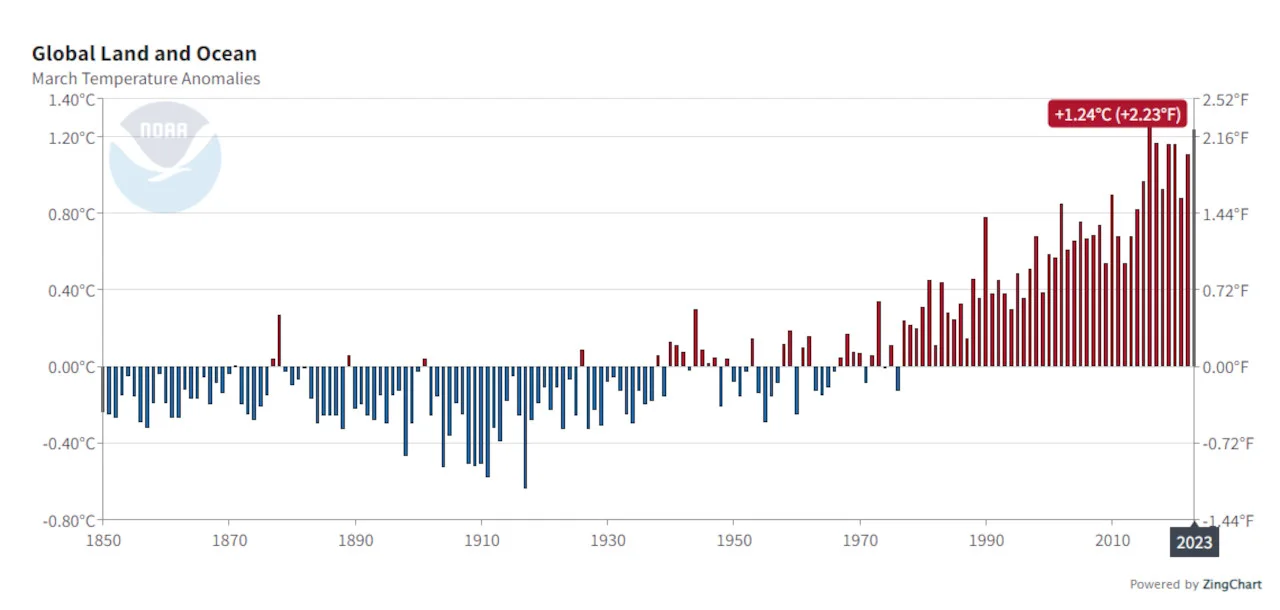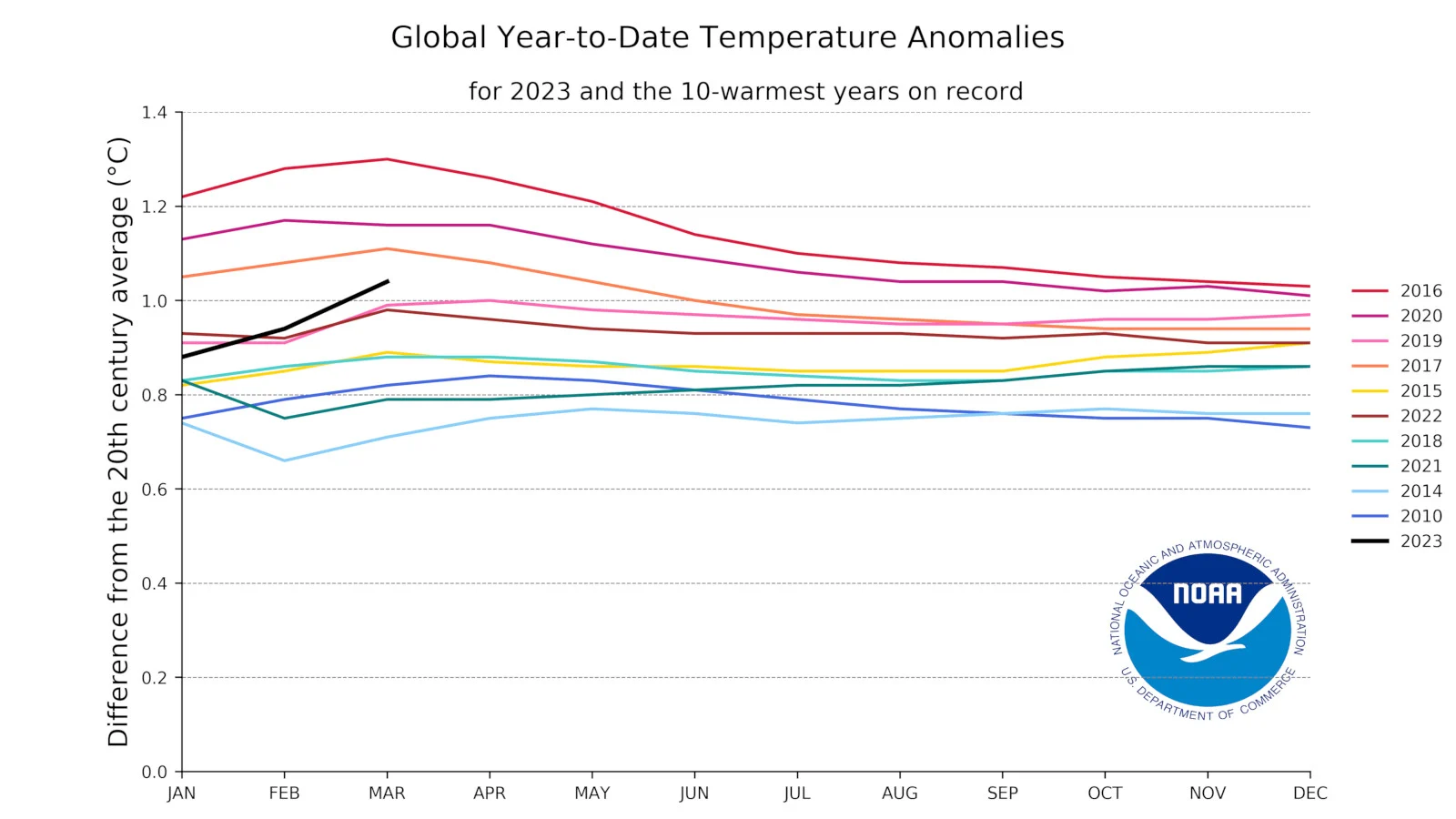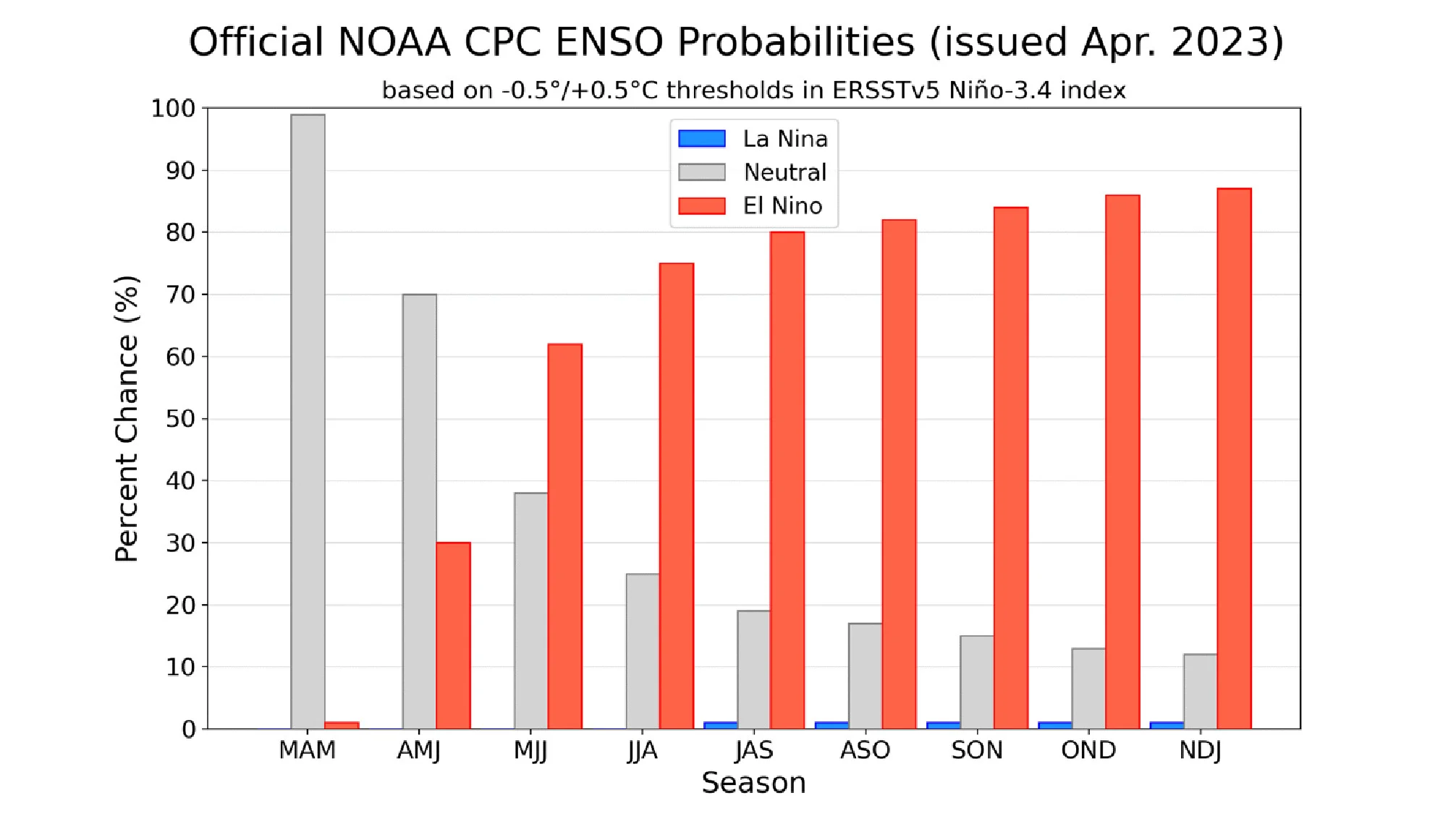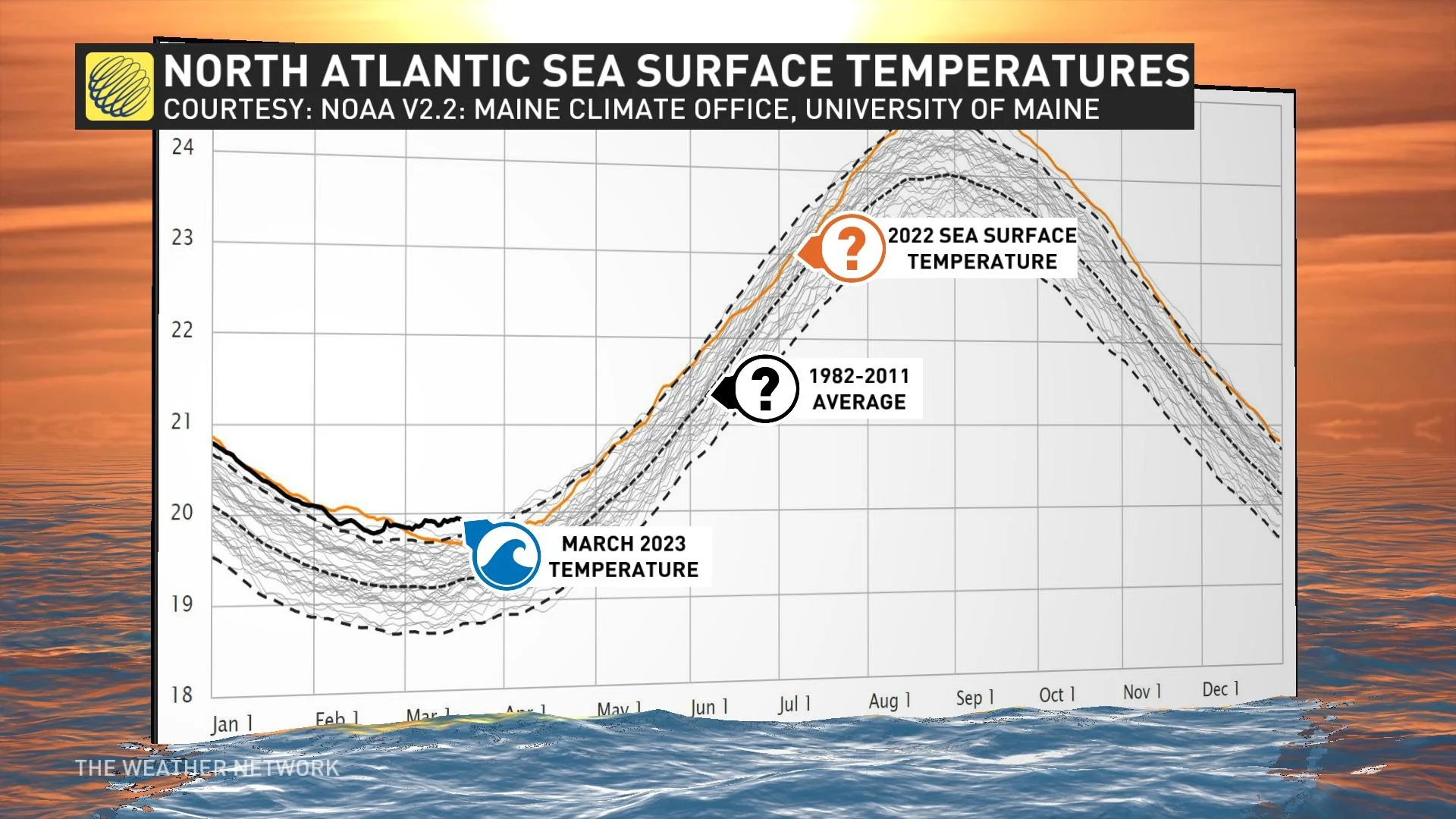
Temperatures in 2023 could be record breaking with rapidly developing El Niño
Last month was the second hottest March on record for the globe, and it could be a sign that 2023 will become one of the warmest years we've ever seen.
As soon as the stubborn multi-year La Niña finally came to an end, global temperatures soared, and if a rapidly intensifying El Niño takes its place, this entire year could end as the hottest ever on record.
March 2023 is now the second hottest March ever recorded for the globe, according to NASA, NOAA, the Japanese Meteorological Agency, and the EU's Copernicus Climate Change Service. The only March warmer was in 2016 — a year now characterized as the hottest on record overall. Mainly, 2016's top ranking was due to human-caused climate change largely from burning fossil fuels, but there was a noticeable contribution by the strongest El Niño we’ve ever experienced.

This time series of March global temperatures from 1850-2023 shows March 2016 as the hottest month of March on record, with March 2023 now ranking as second hottest. (NOAA NCEI)
This second hottest March follows a January that ranked as seventh warmest and the fourth or fifth warmest February we’ve seen in over 140 years.
The rapid advancement in the rankings for March is partly due to rising sea surface temperatures in the equatorial Pacific Ocean. At the start of the month, forecasters proclaimed the end of the persistent triple-dip La Niña. For nearly three years, this pattern of colder-than-normal ocean temperatures had been keeping overall global temperatures slightly cooler.
With that pattern now switched back to normal (aka “ENSO-neutral”), we are seeing global warming unfiltered again.
READ MORE: The curious case of a 'triple-dip' La Niña in a warming world
And even with only three full months of data so far, NOAA forecasters are already over 60 per cent sure that 2023 will rank among the top two hottest years, and over 50 per cent sure that the year will rank as the hottest on record.

This ‘horserace’ graph shows the year-to-date temperature rankings for the hottest year on record so far. Thus, each consecutive month is the average of the months of the year up to that point (for example, March 2023, at the end of the black line, is therefore the average of January, February, and March 2023). Even with only three months tallied so far in 2023, the year is spiking up into the top rankings. (NOAA NCEI)
El Niño set to raise the heat
With March temperatures ranking so high, we have a clear view of just how much climate change has advanced since 2016, as this normal month came close to matching the same month during a “monster” El Niño year. And now, forecasters are seeing indications of a rapid transition into the next El Niño for this summer.
According to the Climate Prediction Center’s April ENSO update, there is a greater than 60 per cent chance that El Niño conditions will develop by the end of July. That probability goes up to roughly 75 per cent by the end of August, and over 80 per cent for the rest of the year.

The official El Niño Southern Oscillation (ENSO) forecast, as issued by NOAA's Climate Prediction Center on April 13, 2023, is overwhelmingly in favour of the development of an El Niño pattern across the equatorial Pacific Ocean this summer. (NOAA CPC)
As a result of this, NOAA has gone from ending the La Niña Warning at the beginning of March to calling an El Niño Watch just one month later.
Ocean heat is already at record levels now that the La Niña has ended. That, alone, could provide 2023 with the potential to become a record-breaking year for global temperatures.

Depending on how quickly the coming El Niño develops and how strong it becomes, by the end of December 2023, temperatures could easily surpass all other years we’ve seen so far. Based on the pattern that has played out in the past, especially in 2015 and 2016, next year will likely be even hotter.
Thumbnail image: (NASA's Goddard Institute of Space Science)












